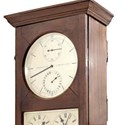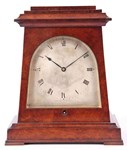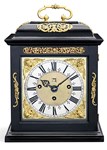Correct to within a second a year, Shortt Synchronome clocks became the highest standard for inter-war timekeeping until the arrival of quartz.
About 100 were produced between 1922-56 for use worldwide in astronomical observatories, naval observatories and for national time dissemination services.
The example sold at Gardiner Houlgate (20% buyer’s premium) in Corsham last month for £25,000 was numbered 101 and only part assembled (and potentially incomplete).
The two key elements were the master movement housed in a cylindrical copper wall mounted vacuum tank and the mahogany-cased ‘slave’ with a large silvered dial with subsidiaries and two door mounted dials.
It was among the prize items in the collection of the late Arthur Mitchell, a founding member of the Electrical Horology Group in 1970 – a sub group of the Antiquarian Horology Society – where he served as secretary for 25 years until 1995.
The May 23 sale was the third tranche of the Mitchell collection (the first parts sold by the auction house in October and February).
First patented by Hope-Jones in 1907-08, more typical Synchronome master clocks were responsible for delivering an electric pulse every 30 seconds to ‘slave’ clocks within many public buildings.
They are particularly popular with the relatively small but growing number of collectors, partly because the slave dial does not obscure the view of the mechanism.
For many years an early example, with a deadbeat gravity escapement housed in a 4ft 8in (1.35m) mahogany glazed case, had been hung together with its 8in (20cm) octagonal mahogany slave dial in Mitchell’s hallway.
This particular clock, sold at £10,500, was illustrated and discussed in Robert Miles’ book Synchronome, Masters of Electrical Timekeeping.



















